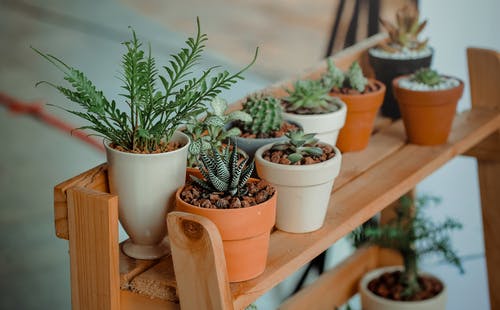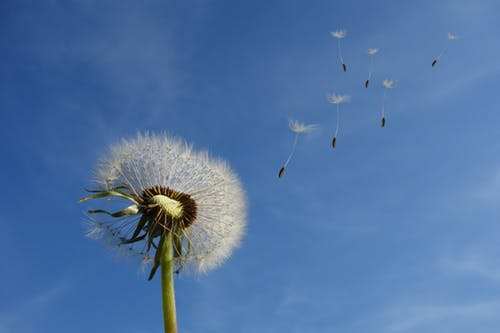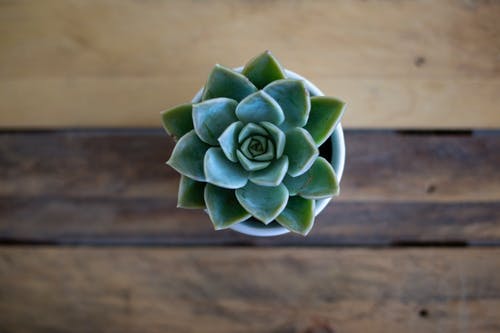Reaching the true essence of survivalism requires the effective use of resources. This includes knowing the use of things that may seem insignificant or finding a way to survive with the bare minimum. It might never have crossed your mind that wild plants and weeds are edible, but this knowledge could mean the difference between life and death.
Always be very careful when considering eating any edible plants. Be careful and when in doubt check with expert resources.
When we’re out in the wild for whatever reason, knowledge of edible plants and weeds is absolutely essential. This can come in handy when you’re out camping, hiking, or in a serious survival situation following a natural disaster.
Our survival packs can only last for so long, and we can’t gain proper sustenance from canned foods and dry goods all the time. It’s hence best to identify edible plants and weeds to make your food supply last as long as possible. This is also useful if you’re thinking about growing a vegetable garden for survival purposes.
Along with identifying the plants themselves, is important to know that in areas where humidity is high, wild food will most probably be growing in the sun. In dry areas, it will probably grow near water. We’ve discussed a few of the most common edible plants and weeds below:
Dandelion (Taraxacum officinale):
The most well-known wild plant is the dandelion weed. This bears a yellow flower with pointed leaf tips and stands on a hollow stem containing white sap. To differentiate this weed from its various other families, the flower needs to be turned over and felt on its veins. Non-hairy veins, or in some cases non-hairy flowers, mean that you have an edible dandelion.
The flavor varies for all parts of the plant within a spectrum of earthy to nutty. It may be covered in poison, so make sure to wash this plant before consumption, whether raw or cooked.
The leaves present on the weed are rich in Vitamins A, B and C and minerals like potassium, calcium, iron and even proteins to a significant level. The percentage of proteins can be 19 to 32 percent per 100g, which is extraordinarily large compared to the protein composition of normal leaves.
The intake of dandelion leaves also brings about positive changes in the circulatory system by cleaning and increasing blood production and lowering cholesterol levels.
A particular use of dandelions in a diet is possible by adding it to smoothies and salads. This way, even picky eaters will not be able to discern the difference.
Purslane (Portulaca oleracea) :
Portulaca oleracea or purslane has small yellow flowers which may be present alone or in clusters at the end of a branch. It has fleshy spherical shaped leaves through which it can thrive in dry places. It’s a small, succulent plant that one can easily grow as well.
This weed contains high levels of Omega-3 fatty acids, several kinds of Vitamin B and A, calcium, iron and many such minerals. This plant also brings health advantages to the blood by decreasing blood pressure and reducing the risks of diseases like diabetes or anemia.
The slightly acidic taste of purslane makes it an interesting substitute for spinach. It has more health benefits than spinach while being very similar to it, apart from a sour and slippery texture. The latter is good for the digestive system, though, so it’s worth keeping this pant in mind for survival purposes.
Chickweed (Sterallia media):
This plant’s flower is small like purslane’s. Five petals are arranged in a star-like formation and the leaves are oval-shaped with pointed tips growing in opposites. The stem is fragile, containing a white elastic thread that can differentiate it as the edible weed among its species.
Chickweed contains chemicals such as polysaccharide mucilage and saponins. Mucilage is a soluble fiber supplement that also relieves inflammations in the respiratory system. Saponins are good for the circulatory and immune system. Chickweed, being a rich source of both, promises us good health. Even for external use, this is an excellent option for healing bites, cuts and skin diseases like eczema and dermatitis.
Magenta Spreen (Chenopodium album) :
This weed gets its name because of the magenta-colored rapidly growing leaves, especially during the summers. Apart from its attractive color, it is a much ‘fruitful’ weed owing to the great amount of plant that it produces, as well as the nutrients it provides. It helps in repairing soil that is in a poor condition; in addition to the culinary benefits.
This plant contains a decent amount of vitamins C and E as well as iron, calcium, etc. It simultaneously plays the role of an antioxidant, counteracting oxidative stress in the human body. The pink powder present on leaves contains large amounts of proteins and calcium. These might not be too good if consumed in high quantities, so you might want to brush the powder off before consumption.
Delicious soups or smoothies are the best options for the consumption of this weed. However, one should take caution before plucking Magenta Spreen, as it’s quite easy to confuse with an almost identical toxic plant.
Stinging Nettle (Urtica dioica):
Whether it was named for its appearance or not is unknown, but leaves on this plant indeed have serrated boundaries. To prevent cuts, therefore, wear gloves when cutting the spiky leaves off. There are no flowers in this perennial plant, which is one of the reasons why it is so unpopular.
Due to their herbal benefits, stinging nettle is famous among the herbalists and is included in many tonics. Being excellent diuretics, they wash out your body fluids through excess urination and reduce problems in blood by cleaning and refreshing it. Filled with iron supplements, they reduce the risk of anemia and other diseases related to blood.
These wild-looking plants have a variety of minerals and vitamins, e.g. calcium, potassium, magnesium and Vitamins A, B, C, and K. The nourishment they provide to the body increases immunity to allergies, boosted liver health and stops menopausal problems.
The leaves, stems, and roots of this plant are all edible. An easy way to make nettle leaf a part of your diet is to make a soup of it.
Wood Sorrel (Oxalis):
The bright yellow flower of this plant consists of five petals surrounded by hairless heart-shaped leaves. The ‘heart’ is divided into two by a crease in the middle and three hearts are joined together to make one leaf.
The feature that tells wood sorrel apart from other sorrels is that their seed pods arch upwards on the stalks at a sharp angle of 90 degrees. ‘Oxalis’ means ‘sour’, and is thus named due to its lemony taste. This, in turn, is due to the presence of oxalic acid.
If you are consuming this plant, make sure not to consume a large amount at the same time. This is because it stops the absorption of calcium which can be toxic for the body.
An abundance of vitamin C in wood sorrels makes them good for the prevention of diseases like scurvy, sore throats, and urinary problems. Plus, wood sorrel tea is an instant energizer, diuretic, decreases thirst rapidly and soothes the gut. The leaves and flowers should be steeped in boiling water for almost half an hour to make the tea.
Many dishes can be prepared using this wild plant. It can be utilized by pairing it with fish, roasting it with salad, preparing soups or as a garnish over other dishes. The edible parts in oxalis are the buds, flowers, and leaves.
We’ve only discussed six plants here, but there must be many more in nature. Below are some works that might help us easily identify edible plants and weeds, especially the ones native to our localities. Studying these will help us form a stable base about how to identify edible plants, stay away from poisonous ones, and how to consume the safe plants once we have them:
Conclusion
There’s no need to remain hungry when you’re in the wild, but foraging for edible plants or weeds does require some knowledge. By getting some good books on the subject, we may gain from the expertise of several survivalist experts. If we’re serious about developing proper survival skills, such knowledge is a must-have, so it’s best to take the right steps as soon as possible.
Reference List:
https://www.hgtv.com/outdoors/gardens/garden-to-table/eat-your-yard-21-weeds-and-flowers-for-your-dinner-table-pictures
https://matteroftrust.org/62-edible-wild-plants-that-you-didnt-know-you-can-eat/
https://www.hgtv.com/outdoors/gardens/garden-to-table/eat-your-yard-21-weeds-and-flowers-for-your-dinner-table-pictures
Weeds
- Chickweed (Sterallia media) http://www.juliasedibleweeds.com/recipes/chickweed-abundant-in-winter/
- Dandelion (Taraxacum officinale) http://www.juliasedibleweeds.com/recipes/dandelion-including-how-to-make-dandelion-coffee/
- Purslane(Portulaca oleracea) http://www.juliasedibleweeds.com/recipes/purslane-hugely-nutritious/
- Wood Sorrel (Oxalis spp) http://www.juliasedibleweeds.com/general/oxalis-wood-sorrel/
- Stinging Nettle (Urtica dioica) http://www.juliasedibleweeds.com/general/stinging-nettle-wild-unruly-plant/
- Magenta Spreen (Chenopodium album) http://www.juliasedibleweeds.com/recipes/magenta-spreen/


